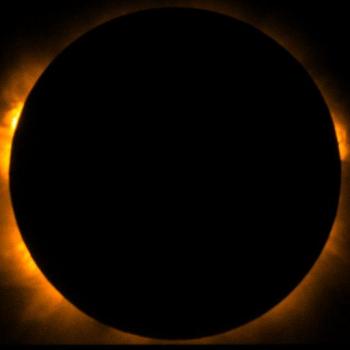Feb 4 2013
On 14th November 2012, e2v image sensors on board the Japanese Aerospace Exploration Agency’s (JAXA) Hinode satellite captured an image of the moon travelling across the front of the Sun.
 Courtesy of SAO, NASA, JAXA, NAOJ
Courtesy of SAO, NASA, JAXA, NAOJ
Launched in 2006, Hinode (formerly known as Solar-B) is a mission to explore the magnetic fields of the Sun. By studying the Sun’s magnetic field, scientists hope to shed new light on explosive solar activity that can interfere with satellite communications and electric power transmission grids on Earth.
e2v supplied Charge Coupled Device (CCD) image sensors for all three of the science instruments on board Hinode – the Solar Optical Telescope (SOT), X-ray Telescope (XRT) and the Extreme Ultraviolet Imaging Spectrometer (EIS). These sensors are based upon e2v’s highly successful CCD42 range which has enabled many space borne science missions. A custom variant was designed and manufactured for Hinode to enable high sensitivity to soft x-rays, by use of e2v’s back thinning process and surface treatment.
Taro Sakao, Principal Investigator of the x-ray telescope in Japan and also Hinode Project Manager for ISAS/JAXA said "I am very pleased to see the XRT image sensors from e2v continuing to operate perfectly after over 6 years in orbit and delivering such fine x-ray pictures of the solar corona. The successful delivery of the CCDs and their excellent flight performance was made possible because of the close collaboration between e2v and the Solar-B project team over a period of nearly 20 years. I look forward to e2v’s scientific CCDs aboard Hinode continuing to provide high-quality scientific data and helping us to further understand the physics of the Sun."
Jon Kemp, marketing and applications manager at e2v said “e2v is proud to have supplied the image sensors used by all three instruments on JAXA’s Hinode mission. As well as capturing this amazing image of the recent solar eclipse, their findings help to increase our understanding of our Sun and its impact on our world.”